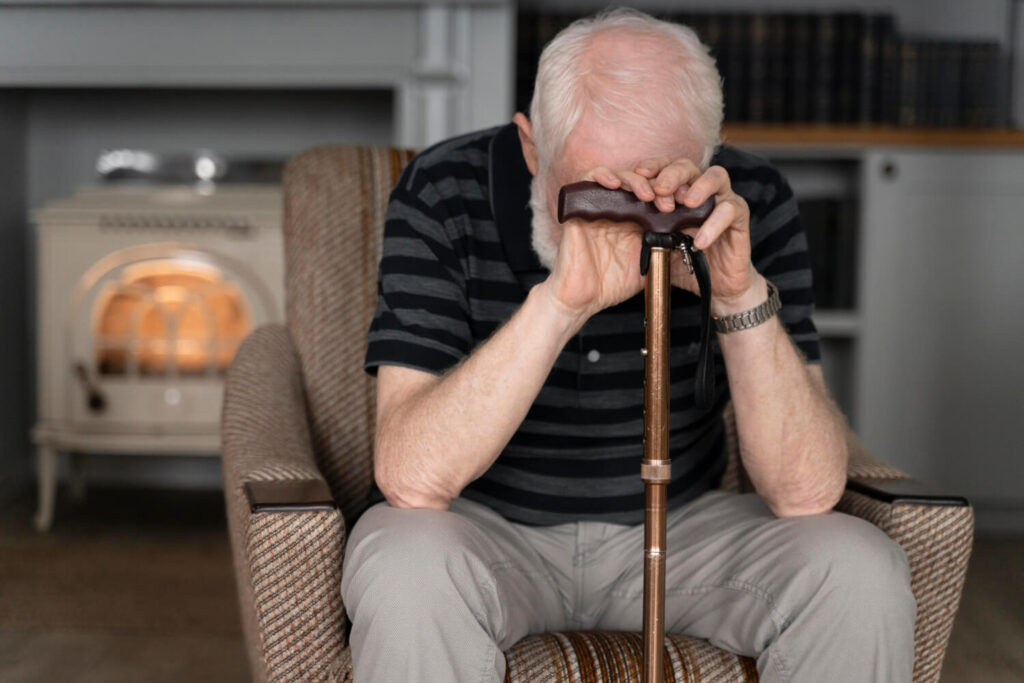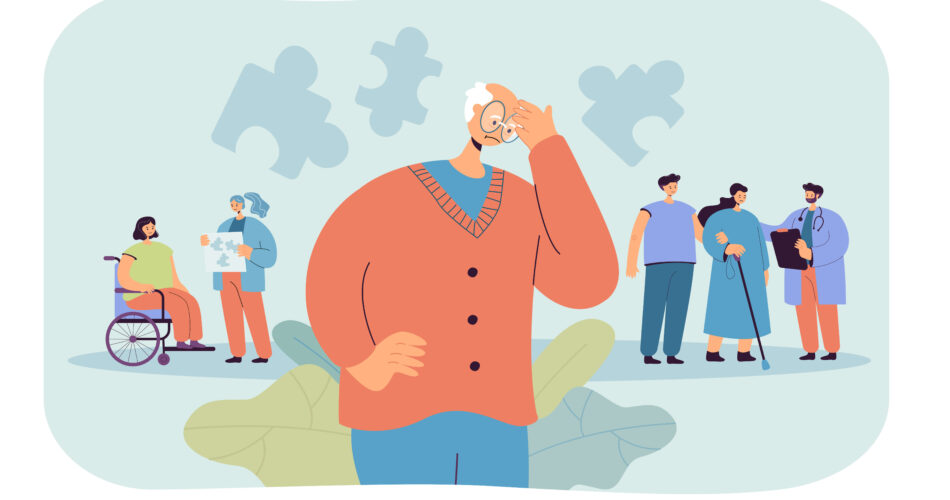As our loved ones age, it is not uncommon for them to experience disorientation. It is a common occurrence in the adult age phase, which can be distressing for both the individual and their family members.
With such scenario, it is only natural to seek help to gain strategies and tips to help manage this condition. In this article, we will explore the various aspects of dealing with disorientation in aged relatives and provide medical interventions when needed. Let’s begin!
Understanding Disorientation in the Elderly

Age-related disorientation is a complex condition that can be caused by a variety of factors. It is important to recognize that it is not a normal part of aging, but rather a symptom of an underlying issue.
In most cases, disorientation in the elderly is often linked to neurodegenerative diseases such as Alzheimer’s or dementia. These neurological conditions cause progressive damage to the brain, leading to cognitive decline and memory loss. As a result, individuals may struggle to recognize familiar places, experience difficulty following conversations, and become disoriented in space or spatial disorientation.
Moreover, research suggests that disorientation in the elderly can also be influenced by other factors such as sensory impairments, medication side effects, and nutritional deficiencies. For example, hearing or vision loss can contribute to a distorted perception of the environment, making it harder for individuals to navigate their surroundings. Additionally, certain medications commonly prescribed to older adults can have cognitive side effects, which increases confusion disorientation.
Common Symptoms and Signs of Disorientation
Recognizing the symptoms and signs of disorientation in our elderly relatives is crucial for early intervention and effective management. Some common indicators include confusion, forgetfulness, getting lost in familiar surroundings, and difficulty staying oriented to the present moment. By being aware of these signs, we can offer appropriate support and care.
In addition to these symptoms, it is important to note that disorientation can also manifest in emotional and behavioral changes. Elderly individuals experiencing disorientation may become more anxious, irritable, or withdrawn. They may exhibit restlessness or engage in repetitive behaviors as a way to cope with their confusion. Understanding the full range of symptoms can help us provide a comprehensive approach to care and support for our loved ones.
Psychological Aspects of Disorientation
Disorientation not only affects an individual’s cognitive functioning but also has significant psychological implications. It can lead to feelings of frustration, fear, and anxiety in our elderly relatives. Understanding the emotional impact of disorientation is essential for providing them with the support and empathy they need.
The Emotional Impact of Disorientation
Feeling disoriented can be incredibly distressing for an elderly individual. It can shake their sense of self, erode their confidence, and lead to a loss of independence. Imagine waking up in a place that feels unfamiliar, where the once-familiar surroundings have become a labyrinth of confusion. This disorientation can breed a sense of helplessness and vulnerability, leaving our elderly loved ones feeling overwhelmed and anxious.
It is important to approach them with compassion, understanding their emotions, and providing reassurance. By acknowledging their feelings and validating their experiences, we can help alleviate some of the distress associated with disorientation. Offering a listening ear and a comforting presence can go a long way in helping them navigate through this challenging time.
Strategy Development for the Elderly

Developing coping mechanisms is the key to better manage disorientation. Encouraging elderly to perform tasks that may help them navigate their lives is a great strategy to utilize.
For instance, engaging in activities that bring joy and fulfillment can provide a sense of purpose and stability. Whether it’s pursuing a hobby, spending time with loved ones, or participating in gentle exercises, these activities can help anchor our elderly relatives and provide a sense of normalcy amidst the disorienting fog.
Additionally, maintaining a consistent routine can help create a sense of predictability and structure. Establishing regular meal times, exercise routines, and sleep schedules can provide a comforting framework for our loved ones, reducing the disorientation they may experience throughout the day.
Daily Routines and Their Importance
When it comes to consistent routines, as mentioned, it is a great structure for patients with disorientation. Establishing a predictable daily routine can provide a sense of stability for our disoriented loved ones. Thus, helping them to be more grounded and at ease.
For example, starting the day with a comforting cup of tea or coffee and engaging in light stretching exercises can help stimulate their senses and promote a positive mindset. Following a consistent schedule for meals, medication, and social interactions can also help reduce confusion and anxiety.
Furthermore, incorporating activities that align with their interests and past hobbies can be incredibly beneficial. Whether it’s reading a favorite book, working on a puzzle, or engaging in gentle gardening, these activities can provide a sense of purpose and fulfillment.
The Role of a Safe and Familiar Environment
Creating a safe and familiar environment is crucial for managing disorientation. Ensuring clear pathways, reducing clutter, and labeling important items can help minimize confusion and increase a sense of security. Additionally, installing safety features like handrails and grab bars can prevent accidents and injuries.
However, there are other aspects to consider when creating a safe environment for our elderly relatives. Paying attention to lighting conditions is essential, as poor lighting can contribute to disorientation and falls. Installing bright, energy-efficient bulbs and utilizing natural light sources can enhance visibility and create a more welcoming atmosphere.
Moreover, incorporating familiar objects and personal mementos can evoke positive memories and provide a sense of familiarity. Displaying family photographs, cherished artwork, or treasured possessions can help create a warm and comforting environment.
Furthermore, considering the sensory aspects of the environment can also be beneficial. Soft, soothing music playing in the background or the use of calming scents, such as lavender, can help promote relaxation and reduce anxiety.
Communication Techniques for Disoriented Elderly

Effective communication is essential in supporting our disoriented elderly relatives. Employing the right communication techniques can minimize frustration, enhance understanding, and strengthen the bond between caregiver and loved one.
Effective Communication Strategies
When communicating with disoriented individuals, it is important to use simple, clear language, speak slowly, and maintain eye contact. Giving them time to process information, asking open-ended questions, and actively listening can facilitate better communication and limit misunderstandings.
The Power of Patience and Empathy
Caring for someone experiencing disorientation requires patience and empathy. Offering reassurance, practicing active listening, and validating their feelings can help reduce their anxiety and foster a sense of comfort and trust.
Medical Interventions and Therapies
In some cases, medical interventions and therapies may be necessary to manage and alleviate disorientation. Knowing when to seek professional help and understanding the available treatments and therapies can greatly assist in providing the best care for our elderly relatives.
When to Seek Professional Help
If disorientation is significantly impacting the quality of life for our aging relatives, it may be time to consult a healthcare professional. They can assess the severity of the condition, conduct diagnostic tests, and provide appropriate treatment options.
Overview of Available Treatments and Therapies
There are various treatments and therapies available that can aid in managing disorientation in the elderly. Medications can help alleviate symptoms associated with neurodegenerative diseases, while cognitive rehabilitation and therapy can improve cognitive functioning and enhance quality of life.
Conclusion
Understanding and recognizing the signs involving mental conditions like disorientation is a must to set off a great start with the intervention. With this connection, developing working strategies can occur, helping elderly to be one step ahead of their condition.
Take care of your loved ones by providing the support they need. Book an online consultation with a health expert to begin early intervention today!



